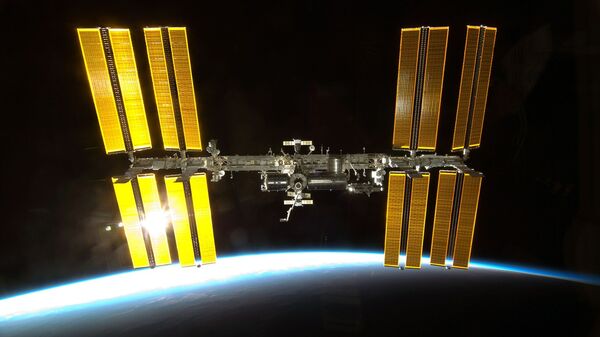Replacing ISS
The ISS participants have agreed to maintain the program until 2024, but it is unclear what will happen afterward. In April last year, Igor Komarov, director general of the Russian national space agency, Roscosmos, said the Russian side was open to extending the program until 2028. However, no final decision has been made on the future of the project. The participants include Russian, US, Japanese, European and Canadian space agencies.
"If the decision is made to stop the work of the ISS, a Russian station may be set up… It is planned to include five modules," Mikrin said at the Academic Space Conference in Moscow.
For the time being, however, Russia is planning to finish the second phase of the construction of the Russian segment of the ISS and add three new modules to it. The modules are designed in a way that would allow them to become the basis for a new independent station.
A new cargo spacecraft with larger payload capacity that is being designed at Russia's Rocket and Space Corporation Energia may be used to deliver supplies to the new station.
Federation
The flight and docking of the Federation manned spacecraft to the ISS, planned for 2024, is among the plans for the existing program, however, the Federation will be capable of a wide range of operations, including travel to the Moon.
The spacecraft, according to Mikrin, will be able to land on the surface of the Moon with a precision of 4.3 miles.
"The advantages of the new spacecraft is the possibility of multiple use of the landing section, up to 10 times, soft landing on a special landing device, the increase of the landing precision up to seven kilometers, ensuring the crew safety throughout the launch phase and increased comfort," Mikrin explained.
The Federation can carry a crew of four and is intended for transporting cargo and people to the orbital station and to the Moon. The designer said that the Moon program is expected to culminate in the establishment of a Moon base, where it will be possible to mine for rare and precious resources, among other things.
READ MORE: Russian Cargo Spacecraft Undocks from ISS Ahead of Pacific Dive
The Federation spacecraft is capable of being in an autonomous flight for up to 30 days and a part of an orbital station for up to a year.
The first Federation is expected to be built by 2021.
Off to Moon With RD-150
The new hydrogen engine for the upper part of the super heavy-lift launch vehicle will be named RD-150, according to the designer.
READ MORE: 'Easy Rider': Russian Cosmonaut Flies Around ISS on Vacuum Cleaner (VIDEO)
The third-stage launcher will be designed based on RD-120 made for Buran project, a reusable spacecraft program that began in the 1970s.
Mikrin added that the first two stages would be designed based on the first stages of the Soyuz-5 rocket, currently under development.
The super heavy-lift launch vehicle is expected to be first used in 2023-2035 to deliver the Federation spacecraft to the Moon's polar orbit.





